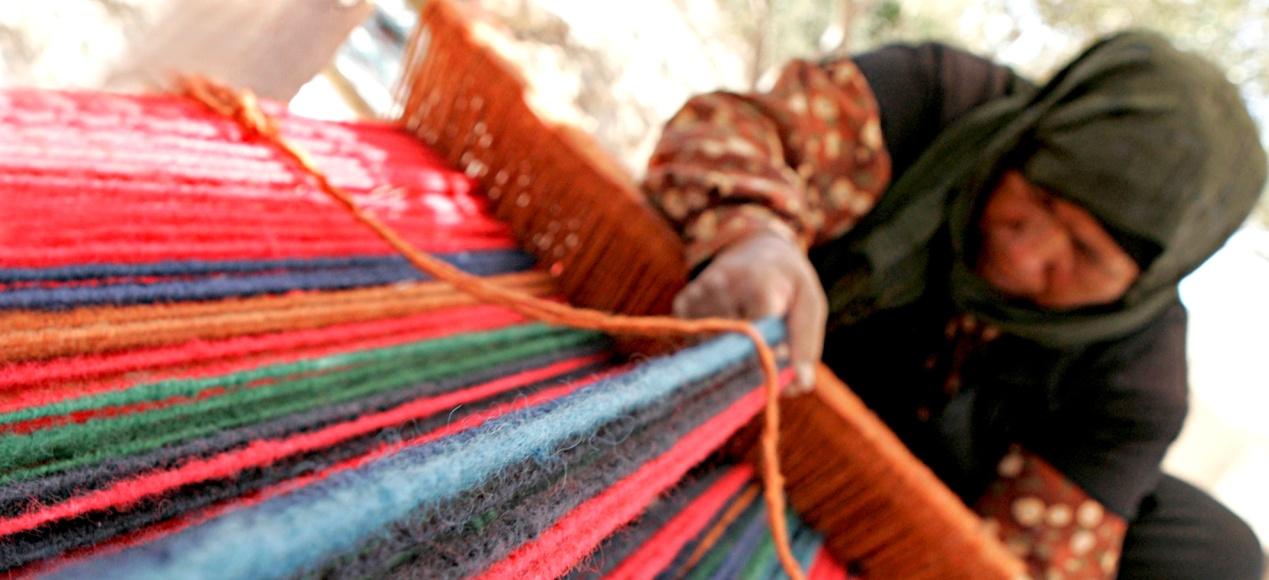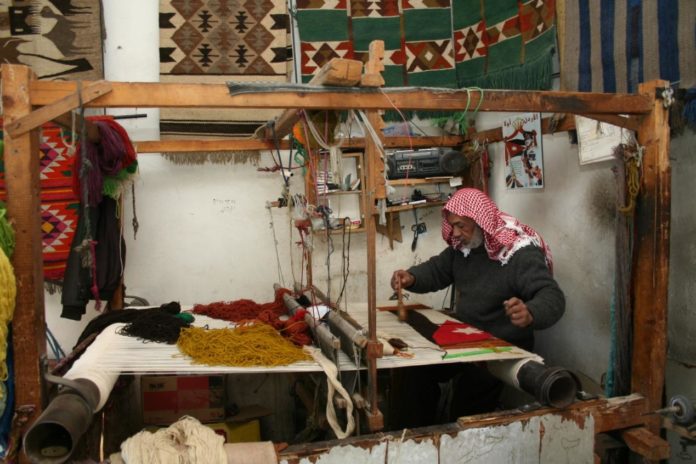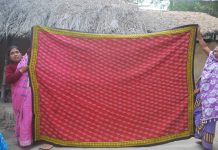Textiles have been produced in the Jordan region since the last Stone Age. The region has materials for weaving, mainly sheep wool, goat hair and camel hair. Imported cotton, flax and silk are also used to produce fabrics.
Many textile techniques were found in Jordan. The ground horizontal loom (sadwo) is very common among Bedouin tribes. They use it for weaving rugs, portable tents and many shapes of textiles. Jordanians also use the vertical loom to produce rugs, wall hangings and households. In addition, people in the cities, villagers and peasants are practiced in knitting, crochet and needlework. They often use knitting needles and crochet hook to make woollen clothes, shawls, hats and some accessories with imported styles. Textiles made by Bedouins using local materials are authentic, eco-friendly and innovative in their decorations. These qualities help create a strong demand for these traditional textiles.
In Jordan, rugs are made from yarns of wool, goat hair or camel-hair. There are two types of rug. Fajjeh is shorter than the normal size rug, about 90 x 80 cm, and varies in decoration from one area to another. And mefrash or madd (bedspread) is usually between two to four meters in length and 80cm in width. Rugs used for bedding and howdah (houdaj), which is a seat or covered (often for women) pavilion on the back of a camel.
Beit sha’er, the portable tent, is one of the most popular handloom products. It is made from camel and goat hair for its durability and its ability to resist natural elements in summer and winter. The size of beit sha’er indicates the social status of the owner and their generosity. Another item is khuroj, which is a double pocket, one pocket on each side, made of wool and used on the back of a camel, horse or donkey to carry heirlooms.
Jordan River Foundation (JRF) is a pilot organisation in Jordan. Their project, the Bani Hamida Women’s Weaving Project, was founded in 1985 by the Save the Children Federation and merged into the Jordan River Foundation in 1998. Playing an important role in sustaining textiles and weaving handicraft. The project now employing 18 full-time employees, 300 wage-based women spinners and weavers and eight dyers.

The Bani Hamida Women’s Weaving Project, photo: Jordan River Foundation
There are other NGOs, community organisations, and small enterprises produce and exhibit textile products in their showrooms to help sustain this handicraft.





